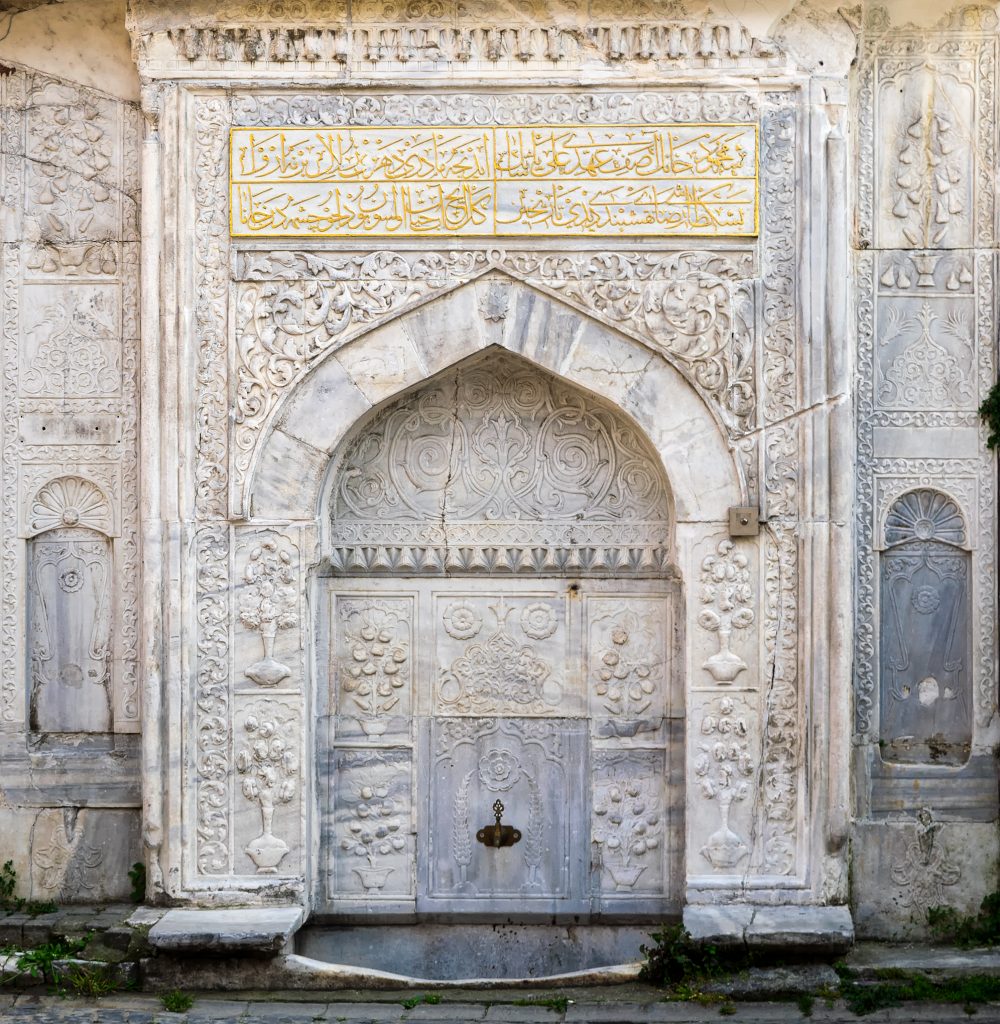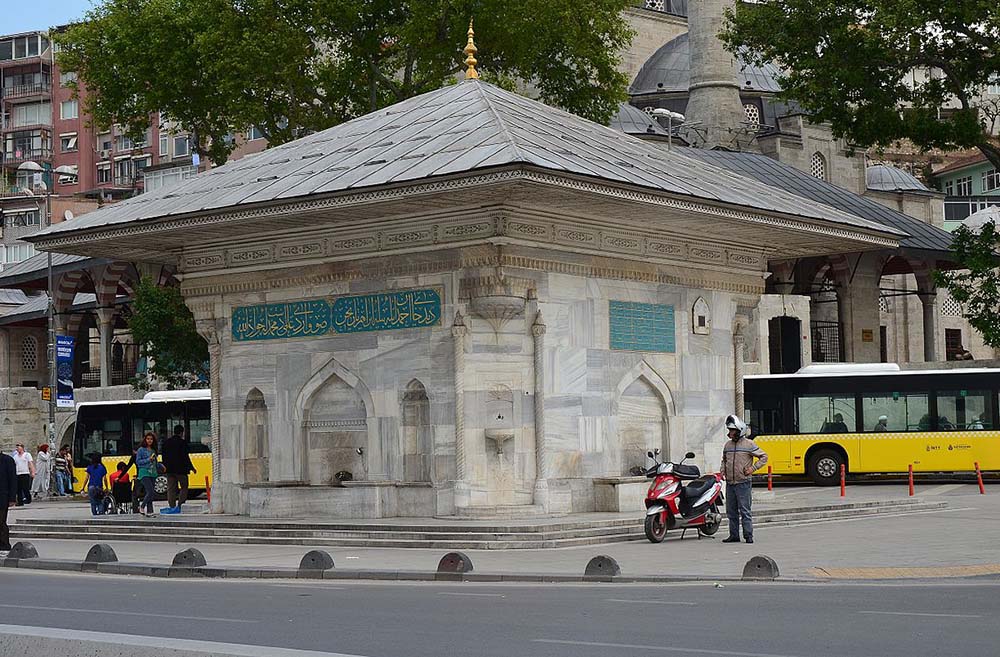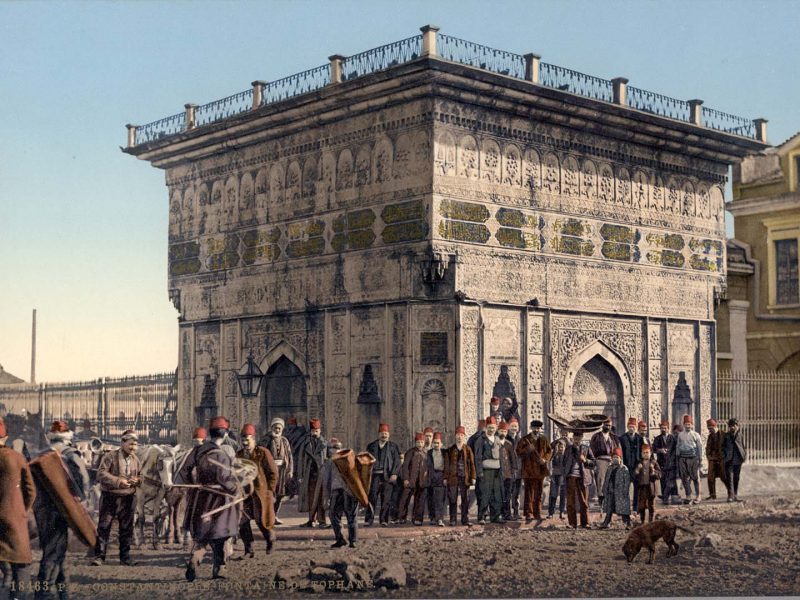Istanbul, which hosts different civilizations, is also famous for its historical fountains which have survived the test of time. We can say that the importance of the fountains has increased, especially after being conquered in 1453. Turkish civilizations have given importance to water much since ancient times; each fountain is presented to us as a different artwork. Unfortunately, the number of extant fountains is few.
Not only water, but the past events, history, and architectural culture also flow from the fountains. In fact, the first fountains of Istanbul go back to the period before conquest. After the conquest, water facilities were built inside the city walls. Fountains usually were made for charity work (i.e., free for the public to use). Not only water, but also fruit juices and sherbets (kind of sweet juice) were distributed from them. Fountains have been an inspiration to poets and writers for centuries both in terms of their architecture and their history. The fountains, mostly built by the sultanas, sultans, or other members of the palace, have reflected details of culture and social life.
Sultan Ahmet Fountain
Bab-i Hümayun is mentioned in history as the first gate of Topkapi Palace. Sultan Ahmet Fountain was built at the front of the door by Sultan Ahmed III during the Period of Tulips. The architect was Ahmed Aga. We can say that the Sultan Ahmet Fountain belongs to the period that Western art styles began to infiltrate Turkish art. There are stones, woodwork, and bronze details on all sides of the fountain. If compared with its era, flashy look should not surprise the audience. Because it was the most abundant period and the luxurious love and beauty had come into prominence at that time. Baroque stone ornaments are also used in the fountain, except for traditional Turkish tile processing.

Saliha Sultan Fountain
Saliha Sultan Fountain
Sokullu Mehmet Pasha Mosque is at the foot of Unkapanı Bridge and at the back of the Mosque. Saliha Sultan Fountain was built by Valide Saliha Sultan in 1732. It consists of two fountains and one fountain with 3 rococo-style windows. The marble-clad fountain with four façades also has engravings in which one can see that the fountain and the village are surrounded by two-storey wooden houses.
Mihrişah Valide Sultan Fountain
Mihrişah Valide Sultan Fountain is located in Eyüp and it belongs to 1794. The complex consists of two separate courtyards and has features characteristic of the 3rd Selim Period. The fountain is designed with five networks and domed and wide fringe. There is also another fountain in Üsküdar with the same name. This is located on the lower wall of the Mihrimah Sultan Mosque. According to information obtained from the epitaph, the fountain was built in 1680.

German Fountain in Istanbul
Ahmet the 3rd Fountain Üsküdar
Ahmet the 3rd Fountain is located in Üsküdar and opposite the Mihrimah Sultan Mosque. It was built near the sea in memory of Emetullah Sultan, mother of Ahmet 3rd in 1728. The fountain has four sides and each side has its own fountain. There are fillings, reliefs, and ornaments on the fountain. The mihrab and cutting details are the most important features of the Turkish fountain.
Bereketzade Fountain
Bereketzade Fountain, known as Beyoğlu’s first mosque, is one of the most special fountains from the Period of Tulips. You can see every detail of the Period of Tulips in the details of the fountain. Today there is only one front, but if we can go back to 150 years ago, it was notably a square fountain. There are different color tones in the fountain’s decorations, and it has ornaments with floral motifs.
Kemankeş Mustafa Pasha Fountain
The Kemankeş Mustafa Pasha Fountain was built on the site of the Saint Antonio Church in 1642. It has an appearance reminiscent of the mihrab. The fountain is decorated with mirrors and relief designs. It was built next to a school by Reisülküttap İsmail Efendi in 1732.
Ayrılık Fountain
Haydarpaşa grassland is known as the biggest grassland on the Anatolian side. The Ayrılık Fountain is also located in this area. The grassland starts from Karacaahmet Tomb and ends in Yeldeğirmeni Neighborhood. Although the history of the fountain is not officially unknown, it is estimated that it comes from the Byzantine period. Other names of fountain are Söğütlü Fountain and Ahmet Aga Fountain.

Fountain from ancient Ottoman era, decorated with flower motifs.
Tophane Fountain
Tophane Fountain is in Tophane Square. It was built by Architect Mehmet Aga by the order of Sultan Mahmut in 1731. The fountain is the third largest fountain and has the highest wall in all of İstanbul. The marble covered fountain is embellished with reliefs and elegant carvings. Although the lancet arch on the fountain and niche resemble Ottoman period ornamentation, it also has feature of baroque architectural design.

Dede Efendi Fountain, Sultan Ahmet
Beykoz İshakağa Fountain
İshakağa Fountain, one of the most important fountains of Beykoz, has a history of exactly 500 years. It has lasted to today thanks to ongoing restoration works since 1746. There are 10 bronze tresses on the fountain. The water flowing from these lilies flows from the marble block, which has remained popular for centuries.


